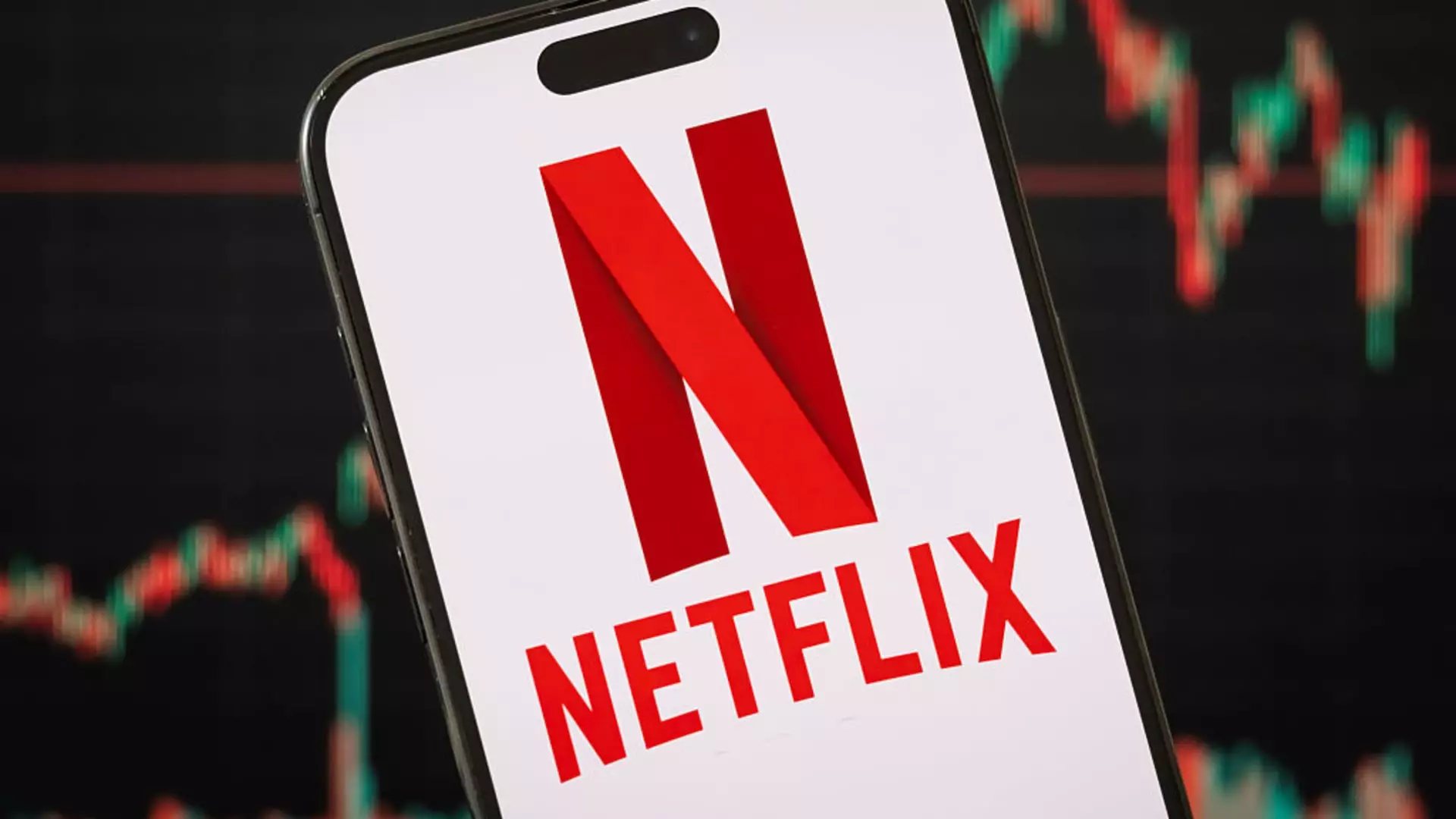Netflix is on fire. The streaming colossus has managed to achieve something that has become increasingly elusive in today’s volatile market: an 11-day streak of stock gains, the longest its shares have ever experienced. This remarkable achievement is more than a statistical plateau; it signifies the company’s strategic resilience in a competitive industry where even minor dips can be devastating. Formerly, Netflix set a nine-day gain record in late 2018 and early 2019, and this new milestone underscores a robust turnaround, showcasing the platform’s undeterred progress since its inception in 2002.
This impressive trajectory can be directly linked to Netflix’s performance following their recent earnings report on April 17. The company reported a significant 13% revenue increase in the first quarter of 2025, which can largely be attributed to higher-than-expected subscription and advertising revenues. Unlike traditional media, which is grappling with the repercussions of external economic pressures, Netflix continues to thrive in environments that might spell doom for lesser platforms.
Political Winds: Unfazed by Trump’s Policies
Oddly enough, Netflix’s consistent ascent comes amid a turbulent political landscape, characterized by tariffs and trade disputes under President Donald Trump’s administration. While many businesses tremble at the thought of economic ostracism stemming from trade wars, Netflix appears unaffected. In stark contrast, traditional media behemoths like Warner Bros. Discovery and Disney have seen their stock plummet—down nearly 10% and 13% respectively since Trump’s inauguration.
What emerges is a fascinating dichotomy: Netflix is cementing its position as a must-have entertainment option, especially during economically challenging times. As co-CEO Greg Peters noted during the company’s earnings call, historical data suggests that the entertainment sector has a remarkable capacity to endure recessions. Hence, when consumers are tightening their belts, platforms like Netflix may remain unscathed—or even thrive—when compared to more fragile sectors.
Forecasting the Future: Growth or Stagnation?
Looking ahead, Netflix has confidently projected its full-year revenue between $43.5 billion and $44.5 billion. Yet, there’s a lurking concern surrounding the company’s declining transparency regarding subscriber numbers. Recently, Netflix shifted its focus away from membership statistics toward revenue growth, raising eyebrows about whether the subscriber base is dwindling or expanding. Analysts are split: while some assert that there is considerable upside potential for Netflix shares, others are cautious given the recent changes in reporting.
An important factor to consider is the pricing structure Netflix employs to maintain its revenue streams. With subscription costs ramped up to $17.99 for the standard plan, $7.99 for the ad-supported model, and $24.99 for premium access, the platform has managed to sustain its customer base—at least for now. However, this strategy could be a double-edged sword; while higher prices can lead to increased income, they might alienate price-sensitive customers.
Market Sentiment and Investor Confidence
As Netflix dominates the global streaming landscape, the anticipated Advertising Upfronts event in May could serve as a significant catalyst for stock prices. JPMorgan has recently signaled optimism regarding NFLX shares, suggesting that they’ve secured their spot as a leader in global streaming. This advocacy from analysts can bolster investor confidence, making Netflix’s stock even more attractive, despite the potential risks that lay beneath the surface.
In a market overcrowded with options, Netflix stands out, yet it’s crucial for consumers and investors alike to remain discerning. While the company’s current triumphs are commendable, they are merely one fluke in a series of unpredictable outcomes. Can Netflix continue its winning streak, or will market forces eventually catch up? The stakes are high, and the coming months will be critical for discerning whether Netflix’s upward trajectory is sustainable or merely a temporary spike in a complex financial landscape.

